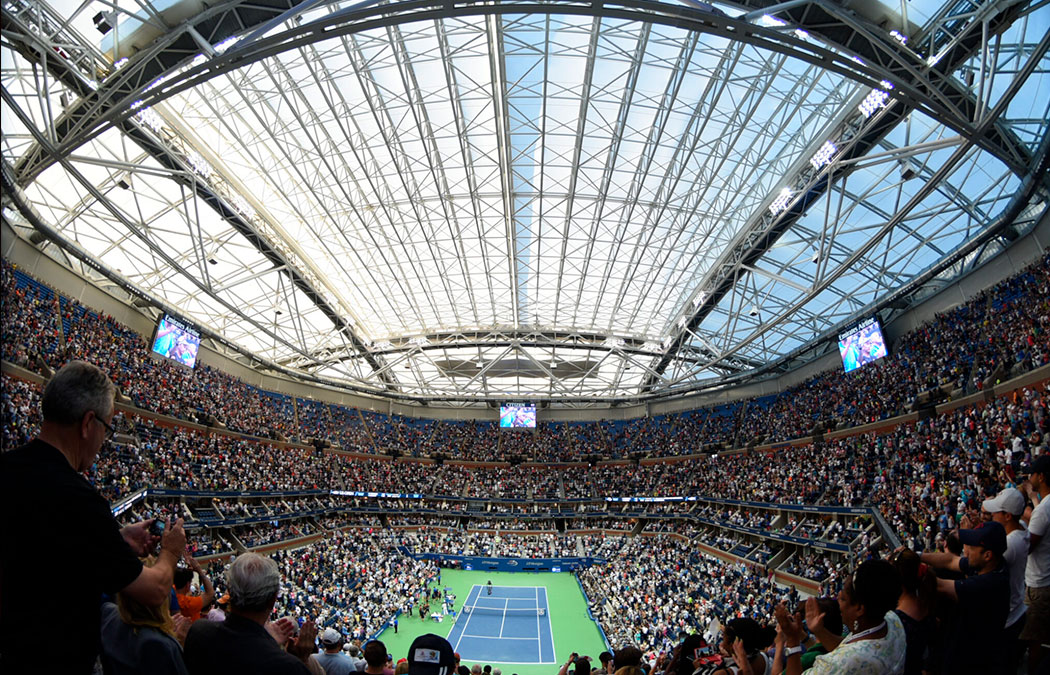Applying Crane Technologies to Retractable Stadium Roofs

/ Blog
Morgan is known for providing advanced material handling solutions – designing, building, and maintaining these solutions around large overhead cranes. Our logo is found on cranes around the world in steel and large industrial operations because for the majority of our 150-plus-year history, overhead bridge cranes were our primary offering.
But other mechanisms, far from a steel mill, operate in a similar fashion. A trolley or truck on a rail moves and, through hoists, winches, pulleys and other components, the truck pulls or moves a heavy object.
Like a stadium roof.
Recently, Morgan representatives once again attended the U.S. Open Tennis Tournament in New York to ensure that the Morgan Kinetic Structures assemblies that move the roofs at the Arthur Ashe and Louis Armstrong stadiums operated as planned. Morgan has been building overhead cranes with multiple motor hoists – like the one used in these retractable stadium roofs – for more than 100 years.
To make these sophisticated machines work, Morgan had to mix the best of its history with advanced technology.
From Concept to Controls
ROSSETTI, the architect for Arthur Ashe stadium, provided Morgan Kinetic Structures a high-level concept. The Morgan team collaborated with Hardesty & Hanover to bring that idea to life. Morgan designed, built, and tested a control system that included motors, variable frequency drives, position feedback devices, programmable logic controllers, fiber & copper networks, data collection, control cabinets, control stations and heating, ventilation and air conditioning (HVAC) systems for the controls.
Moving the heavy roof along a curved axis was a challenge; ensuring that the structure could be moved reliably, safely, and predictably – in a variety of atmospheric conditions – added complexity.
The design had to take into consideration network health, brake operation, motor temperatures, roof skew, rail clamps and other system components to ensure that when the roof needed to move, it operated as expected. The team had to consider all of the conditions or circumstances that could lead to failure – and build in solutions to mitigate those risks.
Yet underneath all of the sensors, lasers, cameras and other modern ways of monitoring the machine was a multiple-motor-hoist crane. The winches that pull the cable that tows the roof is no different than the overhead cranes Morgan has been building for decades. Instead of a ladle of steel that moves from point A to point B, the roof segments move from point A to point B. The control system for this application was based on cranes that we work on every day, just applied in a new environment.
Like every new crane designed, built, and automated by Morgan, this concept started with basic engineering schematics, was transformed into 3D models, built as a prototype, tested in the shop, analyzed for performance, and manufactured to specification.

Moving into the Future
It is satisfying to sit in the control room at the U.S. Open and watch this advanced mechanism operate almost effortlessly. But it is most rewarding to know that operation reflects the company’s desire to apply its knowledge wherever useful. Morgan is an organization that is trusted for the know-how behind overhead cranes, and it is leading us to new industries and opportunities.

